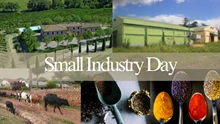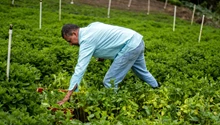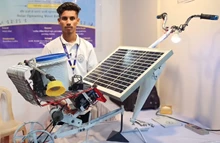
Traditional farming includes filling pots with soil, using grow bags, or planting trees directly in the ground. However, have you ever wondered how a farmer can now produce crops without utilizing soil at all?
Aeroponic Farming: A method to increase potato yield
Aeroponic farming is a soilless farming technology that allows for faster crop growth while using less water and other resources. It is comparable to hydroponic farming. This approach may also be used to cultivate underground tubers such as potatoes. Soilless farming is being developed by a potato technology center in Karnal district in Haryana.
Aeroponic potato cultivation yields a good harvest for the farm, thus the Agriculture Department has chosen to make farmers aware of this technology in other states as well.
There are several benefits to practicing aeroponic farming. It not only solves the issue of land availability but also boosts yield by up to tenfold. It uses less water and fertilizers, lowering agricultural costs even further.
"Nutrients are provided to the plant through hanging roots in aeroponic potato farming technique," explains agriculture specialist Anil Thadani. Using this procedure, the Institute of Agriculture is also able to gather healthy "seed potatoes".
Aeroponic and hydroponic farming techniques have both gained popularity in recent years. Even though they both do not use soil, the methods through which nutrients are provided to crops differ.
The plants in hydroponics are always kept in water, which is fed with nutrients. Nutrients are delivered in aeroponic farming by spraying water. "The potato plant is cultivated in a closed environment with the plant facing upwards and the roots underneath," Anil explains.
At the bottom, water fountains are installed, where nutrients are combined and transferred to the roots. In short, the plant gets sunlight from above and nutrients from below, just like on land." He believes that the technology is amazing in terms of output, but that the initial setup is costly.











